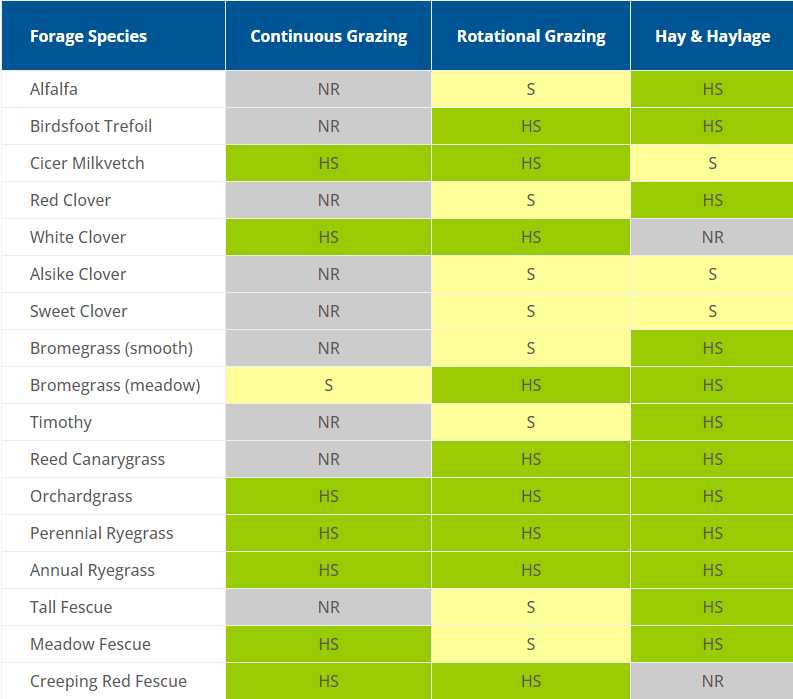- Home
- /
- Agricultural Seed & Crop...
- /
- Forages
- /
- Agronomy
- /
- Meet Your Forage Goals
Selecting Forage Species and Blends to Meet Your Forage Goals
There are many factors to take into consideration when selecting forage species. The following is a list of relevant questions you should always ask before choosing forage species.
(1) Intended Use & Management System
Is the intended use of the forage crop hay or pasture? If pasture, how intensively is the forage stand going to be grazed? Are you rotational, continuous or mob grazing? What is your comfort level in grazing alfalfa? If hay, how many cuts do you expect to take each year? See Table 1(below) for forage crop use recommendations.
Table 1 – Forage Crop Use Recommendations
HS – highly suitable; S – suitable; NR – not recommended

(2) Forage Timing
At which months would you like your forage to be available? See Table 2 for forage productivity timing.
Table 2 – Forage Productivity Timing

(3) Environmental Conditions
How much annual precipitation does your area receive? How harsh are your winters?
(4) Soil Type
What is your soil type (clay, loam, sandy)? How well does your soil drain? Is there a problem with saline or alkaline soils? Is the organic matter content high or low?
For information on variety and species characteristics with respect to environmental conditions and soil type see the detailed tables on sections on Alfalfa & Legumes and Grasses.
